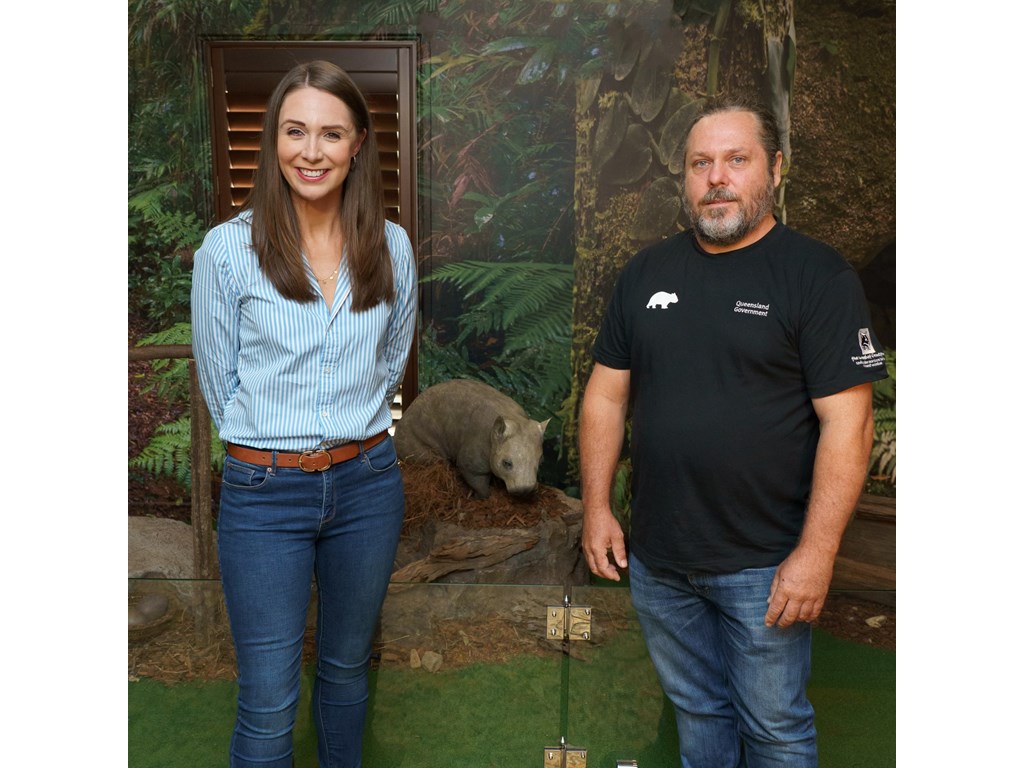03 March 2023
Minister for the Environment and the Great Barrier Reef and Minister for Science and Youth Affairs
The Honourable Meaghan Scanlon

- Powrunna State Forest, a 2,800 hectare site in Queensland’s south-west will be the new home of the critically endangered northern hairy-nosed wombat
- Wombats are expected to move to the state forest over the next 2-3 years, which has unique and suitable soil characteristics for the wombats to burrow
- It builds on an almost $40 million investment by the Palaszczuk Government for programs and actions to protect Queensland’s threatened species and koalas
Link to wombat and site vision here: https://bit.ly/3XRDeva
The Palaszczuk Government has announced a third population of the critically endangered northern hairy-nosed wombat will be established north-west of St George, Queensland following a meticulous analysis of potentially suitable sites.
Northern hairy-nosed wombats are one of the rarest land mammals in the world, with an estimated 315 remaining in the wild at Epping Forest National Park (Scientific) and Richard Underwood Nature Refuge.
The mammals dig vast burrows and require a specific ratio of sand and clay in the soil to support their burrows and ensure they don’t collapse.
The environment at Powrunna State Forest has these unique suitable soil characteristics, and was secured following the purchase of a grazing lease over the State Forest by Department of Environment and Science, and with the support of the Department of Agriculture and Fisheries.
The Queensland Parks and Wildlife Service (QPWS) will begin preparatory works immediately, which includes removing the threat of predators, the installation of water stations and digging burrows to ensure the wombats can immediately find cover.
When the site is ready QPWS scientists and conservation officers will translocate wombats to the new refuge.
The announcement follows an almost $40 million investment by the Palaszczuk Government locked in during the last budget for actions to protect threatened species and koalas as well as a record $262.5 million to create and expand new protected areas across the state.
Quotes attributable to the Minister for Environment and Science Meaghan Scanlon:
“The Palaszczuk Government is acting to protect our threatened species.
“In the 1980s there were an estimated 35 individuals at Epping Forest National Park, and now that location is now almost at capacity due the recovery efforts made.
“Establishing a third population of northern hairy-nosed wombats in the Powrunna State Forest is the next step in safeguarding this critically endangered species.
“These are exactly the type of programs that we’re funding as part of almost $40 million in the budget to ramp up action on threatened species through on-ground recovery programs and research.
“This includes $14.7 million over four years, and $1 million per year ongoing, to enhance Queensland’s protection and recovery of threatened species including the assessment, protection and recovery of species most at risk of extinction.
Quotes attributable to Principal Conservation Officer Dave Harper, who has been working on the Wombat Recovery Program since 2006, and has spent the last decade analysing potential properties for suitable habitat:
“When we completed the analysis at Powrunna State Forest and determined it was suitable habitat, there was a lot of excitement amongst the threatened species team,” Mr Harper said.
“This site will help boost the number of northern hairy-nosed wombats in Queensland, and it is a significant contribution to the further recovery of this critically endangered species.
“We’re looking forward to conducting the site development with south-west Queensland Parks and Wildlife Service in preparation for the translocation of the first wombats.”
Fast facts on the northern hairy-nosed wombat:
- Northern hairy-nosed wombats are nocturnal and feed primarily on grass
- Their burrows maintain a constant temperature and humidity
- They can share burrows with up to 10 wombats
- Their eyesight is poor and they rely on their keen sense of smell to find food
- Females give birth to one joey, usually in the wet season
ENDS
Media contact: Francis Dela Cruz - 0420 592 078

